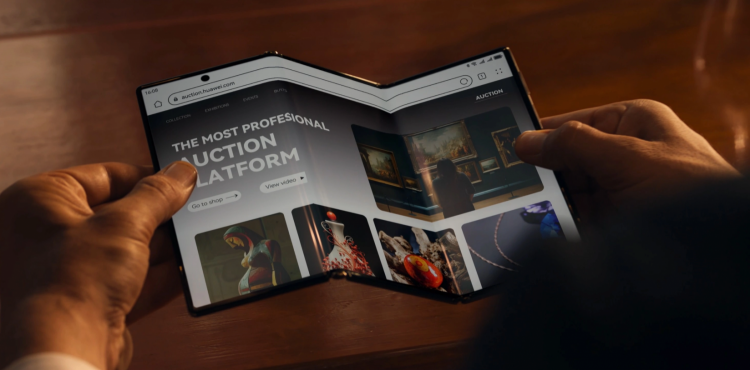Huawei's latest smartphone, the Mate XT, has sparked a surge of national pride in China, positioning the company as a formidable competitor to global tech giant Apple. However, the phone's steep price tag has drawn criticism, highlighting the tension between cutting-edge innovation and affordability.
Unveiled just hours after Apple introduced its iPhone 16 lineup, Huawei's Mate XT stands out as the world's first tri-foldable smartphone. This technological leap has been celebrated on Chinese social media, with many viewing the device as a symbol of Huawei's resurgence despite years of U.S. sanctions that have hampered its access to advanced American technology. One user on Weibo, China's version of X, encapsulated the national sentiment: "Apple hasn't fallen, but Huawei has truly risen again."
The Mate XT's launch comes at a time when Huawei is reasserting itself in the premium smartphone market. The company had previously made headlines with its Mate 60 and Pura series, both of which featured domestically produced semiconductors-another significant achievement in the face of international sanctions. Washington has labeled Huawei a national security risk, a charge the company has consistently denied. The U.S. has extended its export bans to encompass advanced chips for all Chinese firms, aiming to curb China's technological advancements, particularly in the military sector.
Despite the national pride, the Mate XT's pricing has stirred considerable controversy. Starting at 19,999 yuan (approximately $2,800) and reaching as high as 23,999 yuan ($3,370) for more advanced models, the phone's cost is seen as prohibitive for many consumers, especially during a period of economic uncertainty in China. "No matter how much I like the product, the price tag just sounds crazy to me," said a Beijing resident surnamed Xu, a self-described Huawei loyalist, while visiting a local Huawei store.
The phone's advanced features, including its unique dual-hinge design that allows it to fold in a "Z" shape, are undeniably impressive. The OLED display can transform from a 6.4-inch single screen to a 10.2-inch tablet-like display when fully unfolded, with a midway 7.9-inch configuration also available. This versatility is paired with robust hardware: a 5,600mAh battery, support for both wired and wireless fast charging, and a triple camera setup featuring a 50-megapixel main camera.
However, the device's groundbreaking technology has not quelled concerns over its price. A Weibo poll revealed that out of over 9,200 respondents, only 966 planned to purchase the Mate XT. The majority cited the high cost as a deterrent, with 4,700 respondents explicitly stating they were put off by the price. Another 3,500 users indicated they were not currently considering a purchase.
These mixed reactions highlight the challenge Huawei faces as it attempts to balance its ambition to push technological boundaries with the economic realities of its consumer base. While the Mate XT is a testament to Huawei's innovation capabilities, its pricing strategy could alienate a significant portion of potential buyers. In a sluggish economy where many consumers are grappling with financial insecurity, the Mate XT's price tag may be seen as out of touch.
The timing of the Mate XT's release, coinciding with Apple's iPhone 16 launch, further intensifies the scrutiny. Apple, though a direct competitor, has not faced the same level of criticism regarding pricing in its home market, where the brand continues to enjoy strong loyalty. Yet, in China, the narrative is different. Huawei's fans have seized on the opportunity to contrast the company's achievements with Apple's, particularly noting that Apple has yet to announce an artificial intelligence (AI) partner in China to support its iPhone 16-a move that could be seen as a gap in its strategy in the region.
Nonetheless, Huawei's Mate XT has captured the imagination of many in China, symbolizing resilience and technological prowess. Still, the question remains whether the company can translate this enthusiasm into sales, especially given the economic backdrop and the device's premium pricing.



